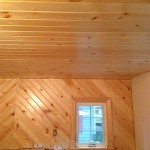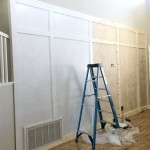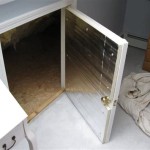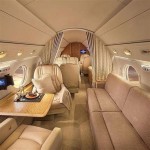What Is Modern Classic Style In Interior Design?
Modern Classic style in interior design represents a harmonious blend of contemporary aesthetics and timeless traditional elements. It seeks to achieve a balanced, sophisticated look by incorporating clean lines, neutral palettes, and high-quality materials often associated with modern design, while simultaneously embracing the elegance and refinement of classic styles. This style avoids stark minimalism and ornate embellishments, opting instead for a curated and intentional approach to design that feels both current and enduring.
The Modern Classic style resonates with those who appreciate the simplicity of modern design but desire a warmer, more inviting atmosphere. It's a versatile style that can be adapted to suit a variety of spaces, from apartments to large homes, and can be personalized through the careful selection of furniture, art, and accessories. The key is to strike the right balance between the two influences, preventing the space from feeling too cold or too cluttered.
Key Elements of Modern Classic Design
One of the defining characteristics of Modern Classic design is its foundation in neutral color palettes. Whites, creams, grays, and beiges serve as the backdrop, creating a sense of calm and spaciousness. These neutral tones allow other elements, such as furniture and artwork, to take center stage. Accent colors are used sparingly, often introduced through textiles, decorative objects, or a single statement piece of furniture, adding pops of color and personality without overwhelming the overall aesthetic.
High-quality materials are paramount in Modern Classic design. Natural materials like wood, stone, and leather are favored for their durability, timeless appeal, and ability to add warmth and texture to a space. These materials are often incorporated through furniture pieces, flooring, and architectural details. For instance, a classic marble fireplace surround might be paired with a sleek, modern sofa upholstered in linen, showcasing the interplay of classic and contemporary elements.
Clean lines and simple silhouettes are central to the modern aspect of this style. Furniture pieces tend to be streamlined and uncluttered, avoiding excessive ornamentation. While traditional elements might be incorporated, they are often reinterpreted in a more contemporary way. For example, a classic wingback chair might be updated with clean lines and a neutral upholstery fabric.
The Role of Furniture and Decor
Furniture in a Modern Classic space plays a crucial role in achieving the desired balance. Pieces often feature a mix of classic and modern influences. A tufted velvet sofa, for example, might be paired with a sleek, minimalist coffee table. The key is to select pieces that are well-made and possess a timeless quality. Mixing vintage or antique pieces with contemporary designs can further enhance the layered and curated aesthetic.
Decorative accents are used judiciously in Modern Classic interiors. The focus is on quality over quantity. A few carefully chosen pieces, such as a sculptural lamp, a piece of abstract art, or a collection of antique books, can add personality and visual interest without cluttering the space. Mirrors are often employed to enhance natural light and create a sense of spaciousness.
Textiles introduce texture, pattern, and color. While the overall color palette remains neutral, subtle patterns and textures can be introduced through cushions, throws, and rugs. Natural materials like linen, wool, and silk are preferred for their luxurious feel and timeless appeal. Layering textiles adds depth and warmth to the space, enhancing the overall sense of comfort and sophistication.
Creating Balance and Harmony
Achieving the right balance between modern and classic elements is essential to the success of this style. The aim is to create a space that feels both fresh and familiar, contemporary yet timeless. This can be accomplished by carefully considering the proportions of the furniture, the use of color and texture, and the placement of decorative accents. Avoiding extremes is key. The space shouldn't feel overly minimalist or overly ornate.
Lighting also plays a significant role in setting the mood and highlighting key features. A combination of ambient, task, and accent lighting is often used to create a layered and inviting atmosphere. Recessed lighting can provide overall illumination, while table lamps and floor lamps add warmth and focus to specific areas. Statement chandeliers can also be incorporated, especially in dining areas or entryways, to add a touch of classic elegance.
Architectural details, such as crown molding, wainscoting, and high ceilings, can enhance the classic elements of the design. These details can be balanced with more modern elements, such as large windows and open floor plans, to create a cohesive and harmonious space. The interplay of these architectural features contributes to the overall sophisticated and layered aesthetic that defines Modern Classic design.

What Is Modern Classic Style In Interior Design Inspiration Books Blog

What Is Modern Classic Style In Interior Design Inspiration Books Blog

Modern Classic Interior Design Cyruscrafts

Before After Modern Classic Interior Design Makeover Decorilla

What Is Modern Classic Style In Interior Design Inspiration Books Blog

Modern Classic The Enduring Chapter Of Contemporary Ideas Book

An Exclusive Modern Classic Interior Design

What Is Modern Classic Style In Interior Design Inspiration Books Blog

Before After Modern Classic Interior Design Makeover Decorilla

Modern Classic The Enduring Chapter Of Contemporary Ideas Book
Related Posts








